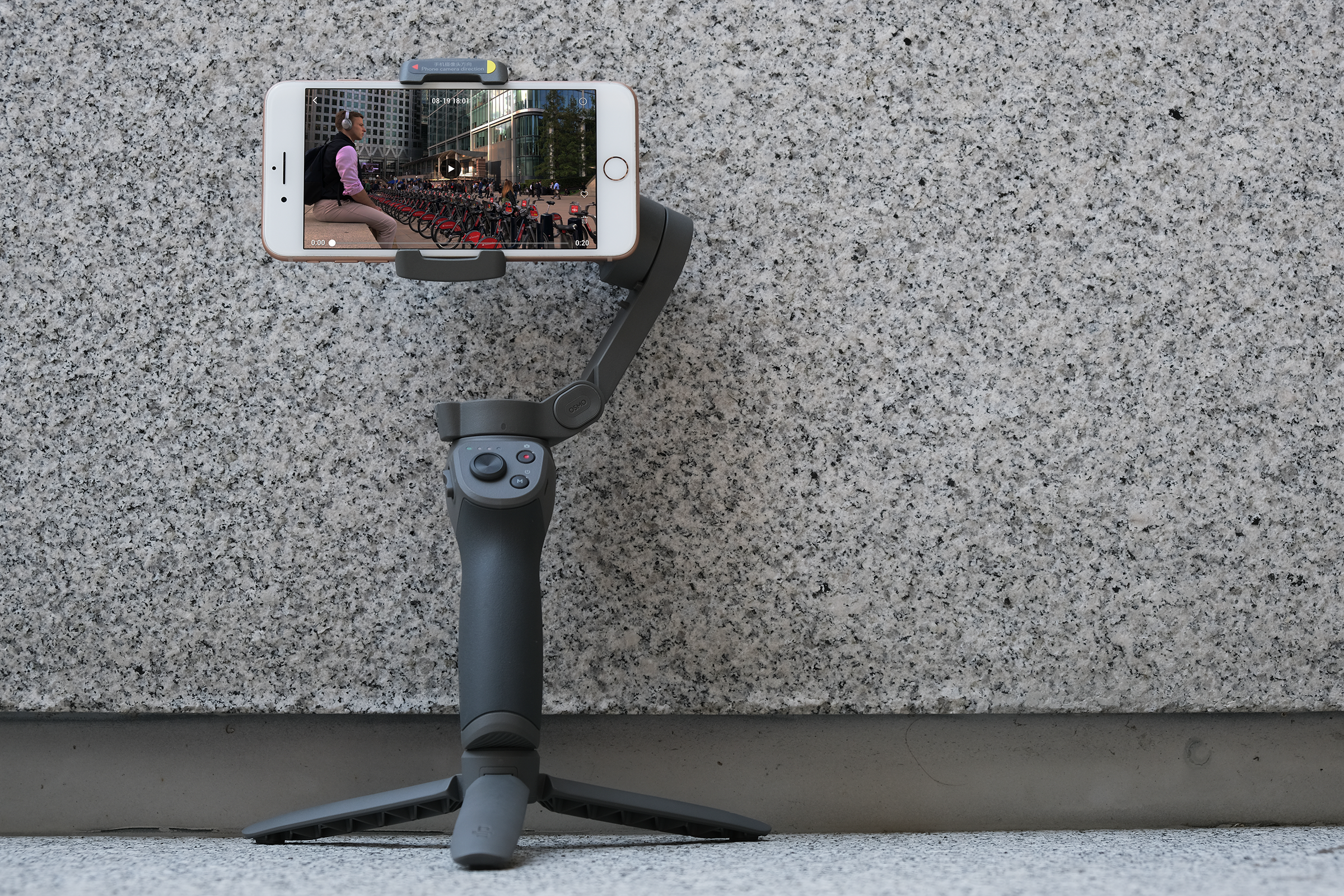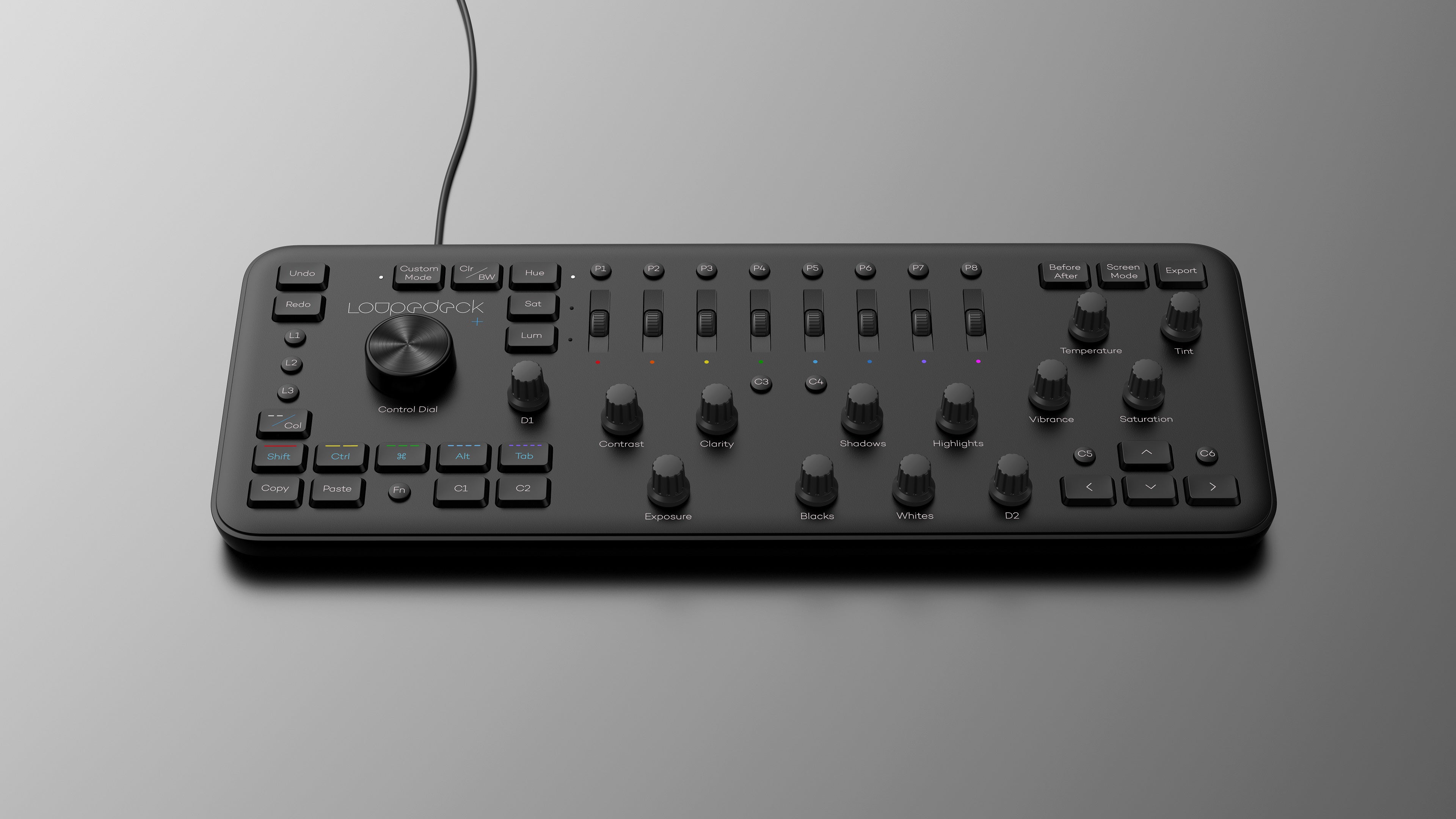Hollyland Lark Max Review
An affordable microphone for vlogging and podcasting






Verdict
A fantastic alternative to the DJI Mic 2 and similar compact wireless mic setups, the Hollyland Lark Max benefits from solid all-round performance, simple operation and clever design – all at an attractive price.
Pros
- Good sound quality
- Simple operation and compact design
- Excellent 22-hour battery life
Cons
- No Bluetooth direct connection
- RX can only be hot shoe mounted facing backwards
- No 32-bit float audio option
Key Features
- Environmental noise cancellationAutomatically lowers background sound to keep vocals clear
- 24-bit/48kHz audio qualityHigh-resolution recording for crisp, detailed sound
- Internal storageTX features 8GB of space for up to 14 hours of recording
Introduction
Like the recently released DJI Mic 2, the Hollyland Lark Max is a compact and lightweight omnidirectional wireless microphone designed for recording voiceovers, vlogs or interviews in high quality in almost any situation – indoors or out.
Hollyland impressed with its smartphone-focussed Lark C1, but the Lark Max works with a wider variety of products. You can link it to your smartphone or tablet, yes, but it’s also able to slot into a camera’s hot shoe, hook up to a computer via USB or operate completely solo thanks to its built-in storage.
Like the DJI Mic 2, the Hollyland Lark Max is available with its own charging case and features noise-cancellation technology, but a quick glance at the full features list reveals that it doesn’t quite match up to it in terms of on-paper appeal. With a more affordable asking price, however, could it be a worthy alternative for creators on a tight budget? Here are my thoughts.
Design
- Pocket-sized charging case
- Lightweight, clip-on TX transmitter
- RX receiver with touchscreen and dial
The Hollyland Lark Max receiver and transmitter can be purchased on their own, but I think the best option is the bundle featuring one RX receiver, two TX transmitters, a charging case (able to hold all three of the above) and a sturdy carrying bag (inside which you’ll also find two windshields for the transmitters and four cables: 3.5mm to 3.5mm, USB-C to Lightning, USB-C to USB-C and USB-C to USB-A).
That’s basically everything you’ll ever need to use and charge the system while you’re out and about, all fitting into a single rugged and water-resistant bag.

The TX unit is small and lightweight (just 33g, which is only 5g more than the DJI Mic 2) and can be attached to clothing via a clip or magnet. Once fixed, I could barely feel it at all, and it never felt likely to fall off either. The furry windshield slips onto the top, but only fits securely one way, so it pays to ensure it’s firmly on before walking around. It comes with a single 3.5mm audio input for connecting an optional lavalier mic.
The RX unit weighs around 60g and is a little larger, although still tiny enough to fit in a small pocket. It also comes with a clip, which doubles as a mount for attaching it to a camera’s hot shoe. Unfortunately, it only fits into the hot shoe one way (facing towards the back of the camera); the DJI Mic 2’s RX fits in both ways, and I would have preferred the Lark Max to do the same, as sometimes you’ll be in front of the camera filming yourself and it’d be handy to see the 1.1-inch OLED and access the controls in these situations.

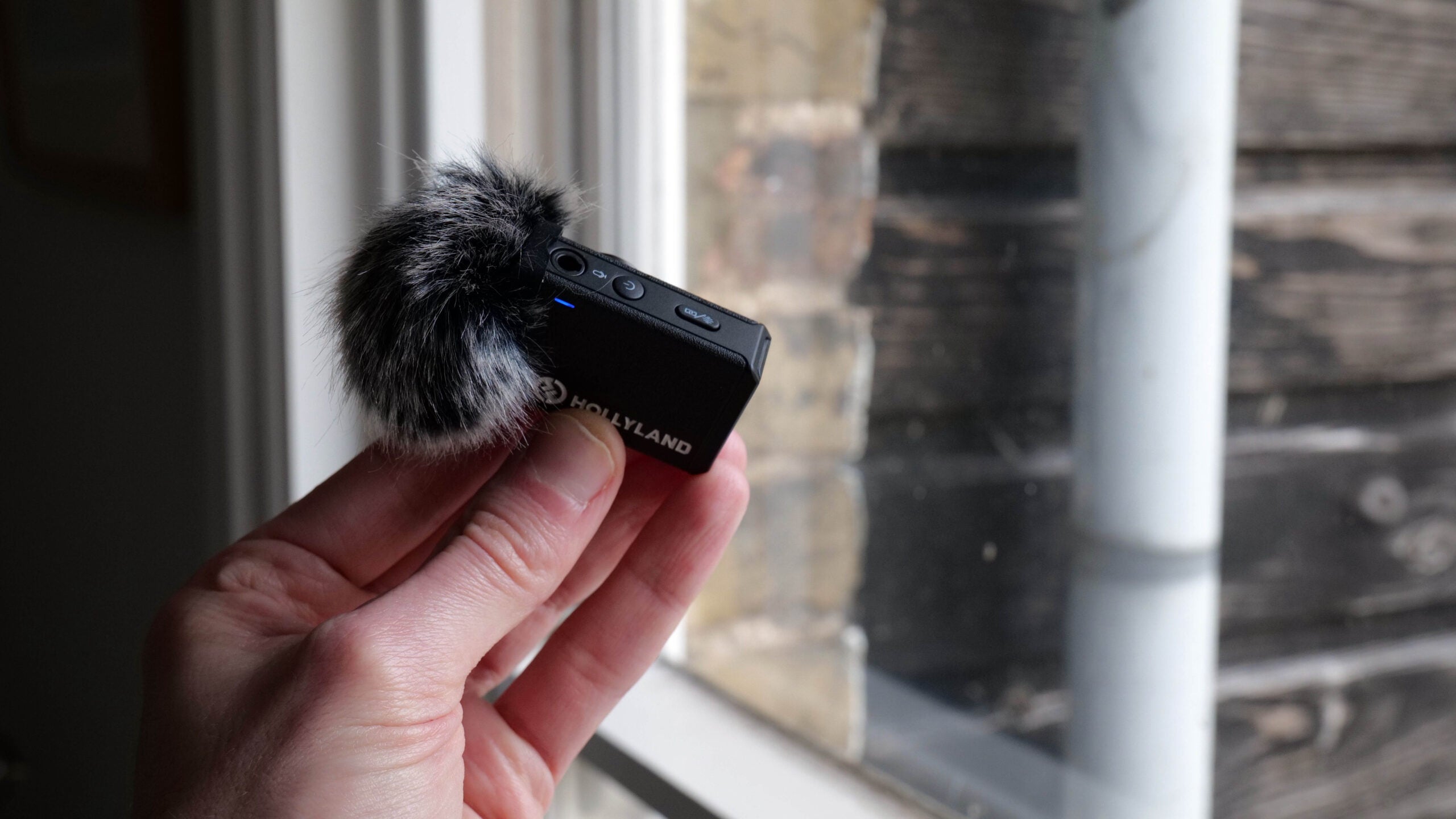
For connectivity, you get USB-C (for connecting to a mobile device or computer), a 3.5mm TRS output (for cameras) and a 3.5mm headphone input should you want to monitor audio levels live.
Controls are simple on both the RX and TX, with the former benefiting from both a touchscreen and a pressable dial. You can use one, the other or both when changing settings, and having the choice is handy if you’re wearing gloves or the screen is wet from rain.
Overall build quality of all the elements is solid, although not quite up to the sturdy standards set by the DJI Mic 2. There’s a little bit more creak and flex here, but nothing I was unduly concerned by.
Features
- Internal recording with 8GB of space
- 250m transmission range
- Up to 22 hours of battery life
The Lark Max’s TX can operate fully independently of the RX, thanks to its 8GB of built-in storage: just hit the record button and it’ll capture up to 14 hours of audio in the same lossless quality as regular operation.
You can also turn the noise cancelling on/off by hitting another button, with the colour of the light indicating the current state. It’s a handy feature if you want to travel as light as possible, although it would have been nice to have the option to also record directly wirelessly to a mobile device via Bluetooth (something you’ll find on the DJI Mic 2).
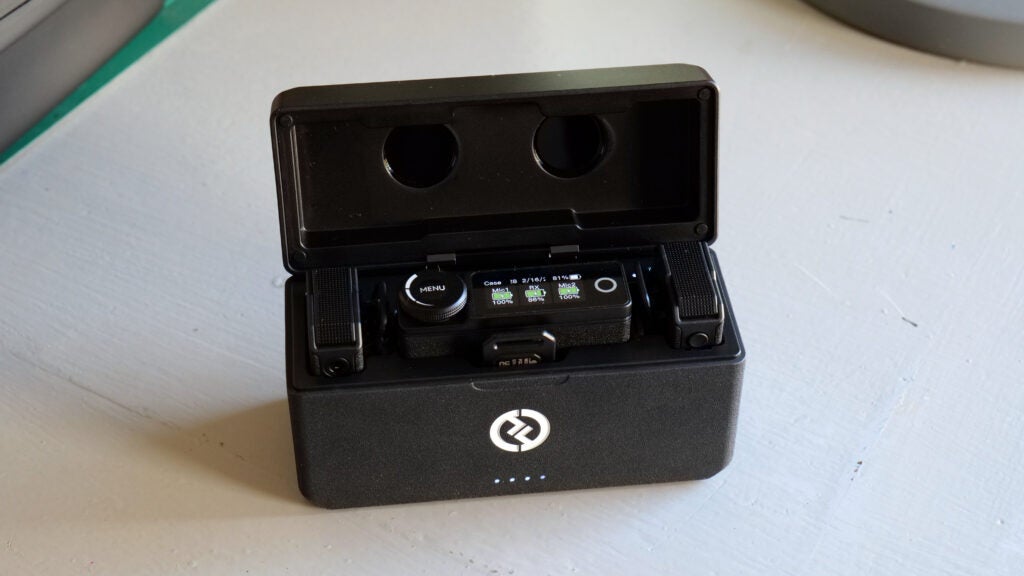
The transmission range, however, matches the Mic 2’s: up to 250m in ideal conditions. In reality you’re probably never going to need that distance, and my tests recording at home while walking from floor to floor suggest that solid obstacles like walls and floors cause the range to drop to just a few metres before interference can be heard – or the signal cuts out completely – in the recordings (the same happened with the Mic 2). Just be realistic in your expectations here to avoid disappointment.
One thing that doesn’t disappoint is battery life. The built-in batteries on the TX and RX last for around 7.5 hours and 9 hours respectively, and with on-the-move recharging courtesy of the charging case, you can achieve as much as 22 hours of constant use. That actually beats the DJI Mic 2 by four hours.
Audio quality
- 24-bit/48kHz audio with three EQ settings
- Mono, Stereo and Safety Track recording modes
- Effective noise cancelling tech
The Hollyand Lark Max offers a very similar recording experience to the original DJI Mic, offering high-quality 24-bit/48kHz sound, picked up in an omnidirectional pattern. With the RX attached to my Panasonic GH6 camera and the TX clipped to my shirt about four inches from my chin, I originally found the recording gain too high, leading to results that were far too loud. After consulting the user guide, I set my camera’s recording gain to low and the resulting sound was much more comfortable.
Audio quality is excellent: clear, precise and not too affected by the wind when using the supplied furry shields. You might get cleaner sound from a shotgun or USB mic, yes, but given the plug-and-play convenience of this setup its results are impressive. You could certainly use the recordings for podcasts and similar “professional” applications.
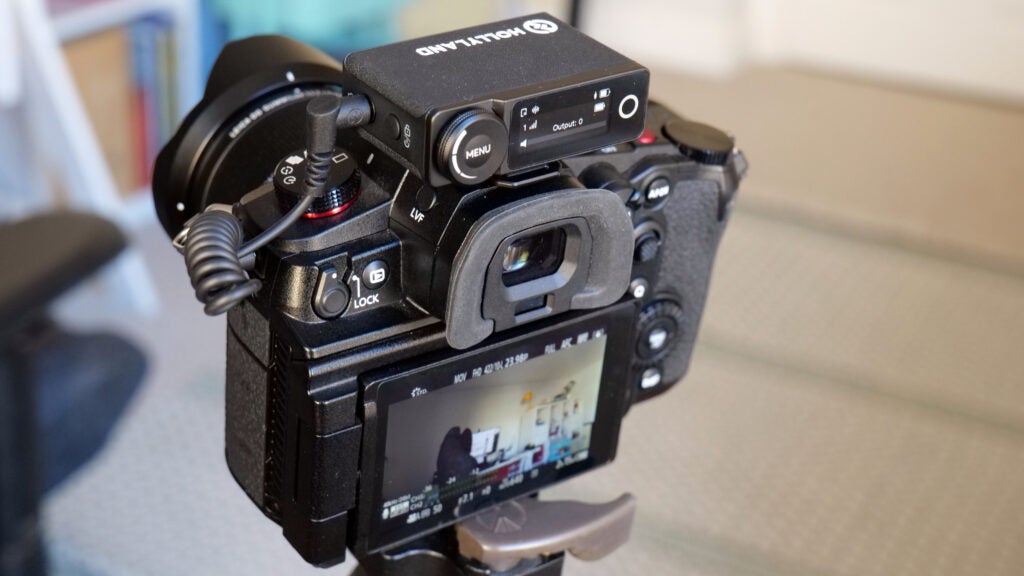
There are three main recording modes: Mono, Stereo (which requires you to use two TX units at once) and Safety track, which uses a second mic to record the same track but at 6dB lower – handy as a backup if your levels end up blown out by an unexpectedly loud noise. Despite having a general reluctance to use monaural rather than stereo for recording, I found it made the most sense for general ‘walking around’ audio as it only requires the one transmitter.
You also record using one of three EQ settings: Hi-Fi (the standard mode), Low Cut (which cuts out lower-end sounds) and Vocal (which enhances voices). Having tried all three I found Hi-Fi worked just fine and delivered the most natural-sounding results, but I’m sure the others have their place in specific situations.
Finally, a word about the environmental noise-cancelling tech: it works! It’s not the most dramatic of ENC modes, but in my tests it did cut down on the background sound without overly affecting vocal audio. It can be easily switched on and off during a recording too, both on the RX and TX units.
Latest deals
Should you buy it?
You want superb value for money
Currently around £70 cheaper than the DJI Mic 2, the Lark Max represents a solid return for your cash while offering a similar level of performance.
You want the best-equipped compact wireless mic
The DJI Mic 2’s specialist features like Bluetooth recording and 32-bit float audio give it a more impressive feature set on paper.
Final Thoughts
The Hollyland Lark Max is a solid alternative to the DJI Mic 2, even if it doesn’t quite match its feature set; it has a significantly lower price and slightly better battery life, after all.
Its impressive audio quality, overall ease of use and the convenience of its charging case mean it doesn’t feel like a budget option at all, so if you can live without direct Bluetooth recording and 32-bit float audio (and I suspect a great many of you can) it’s well worth considering as an affordable, flexible and portable solution for vlogging, podcasting and similar forms of content creation.
How we test
During each microphone review, we conduct a series of recording tests that include sampling audio during ideal settings, with background noise applied and in an outdoor setting (where possible), to give you the best idea of how each device performs in real-world use.
Tested in indoor and outdoor settings
Tested with phone and camera
FAQs
The built-in batteries on the TX and RX last for around 7.5 hours and 9 hours respectively, while the charging case provides 22 hours of constant use.
There is no Bluetooth direct connection.




